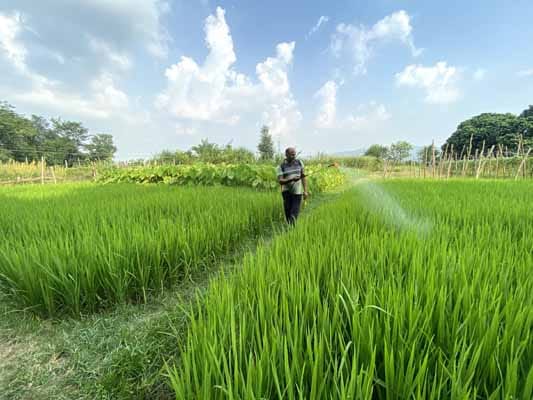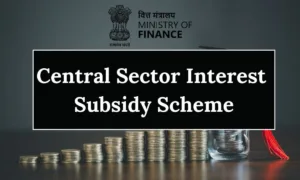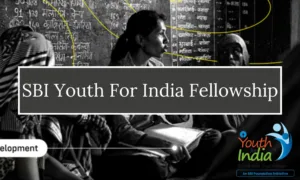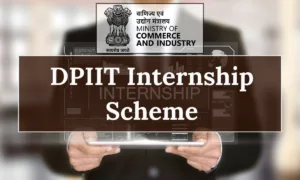On September 19, 2023, the Union Agriculture Minister unveiled a substantial agricultural support plan, stating that the government has earmarked Rs 20,000 crore for Kisan Credit Card (KCC) loans. As a component of this endeavor, the government is considering a relaunch of the KCC program with the aim of offering loans of up to Rs 3 lakh to eligible recipients.
What is the Kisan Credit Card Scheme?
The Kisan Credit Card (KCC) Scheme was introduced with the primary objective of ensuring that farmers have access to sufficient and timely credit for their agricultural activities. The Government of India offers an interest subvention of 2% and a Prompt Repayment Incentive of 3% to farmers, effectively providing credit at a highly subsidized interest rate of 4% per annum.
Furthermore, the scheme was expanded in 2004 to encompass the investment credit needs of farmers involved in allied and nonfarm activities. In 2012, the scheme was reviewed by a working group led by Shri T. M. Bhasin, CMD of Indian Bank, aimed at simplifying the program and enabling the issuance of Electronic Kisan Credit Cards. The scheme offers general guidelines to banks for implementing the KCC program, allowing implementing banks the flexibility to adapt it to meet specific requirements of their institutions or locations.
| Kisan Credit Card (KCC) Scheme 2023 Key Highlights | |
| Kisan Credit Card Scheme Launch Date | August 01, 1998 |
| Kisan Credit Card Scheme Official Website | Click Here |
| Kisan Credit Card Scheme Objective | To offer timely and sufficient credit assistance through a streamlined and simplified process to farmers. |
| Kisan Credit Card Scheme Interest Rate | 4% Per Annum |
| Kisan Credit Card Scheme Loan Amount | Rs 3 Lakh (Maximum) |
| Kisan Credit Card Scheme 2023 Budget | Rs 20,000 Crore |
| Kisan Credit Card Scheme Loan Tenure | 5 Years |
| Kisan Credit Card Scheme Age Limit | 18-75 years |
| Kisan Credit Card (KCC) Scheme Helpline Number | Click Here |
| Kisan Rin Portal Website | Click Here |
Kisan Credit Card Scheme Objective
The primary goal of the Kisan Credit Card scheme is to offer timely and sufficient credit assistance through a streamlined and simplified process to farmers. This support is intended for various purposes, including:
1. Fulfilling short-term credit needs for crop cultivation.
2. Covering postharvest expenses.
3. Providing loans for marketing agricultural produce.
4. Addressing the consumption requirements of farmer households.
5. Offering working capital for the maintenance of farm assets and activities related to agriculture.
6. Meeting the credit requirements for investments in agriculture and its allied activities.
The scheme aims to provide farmers with a one-stop solution for their financial needs in these areas.

Kisan Credit Card Scheme Types of Cards
The Kisan Credit Card can come in different types, each with its own features:
1. Magnetic Stripe Card with PIN: This type of card has a magnetic stripe, similar to traditional debit cards, along with a Personal Identification Number (PIN). It allows access to all bank ATMs and micro ATMs for various banking transactions.
2. Biometric Authentication Card with Magnetic Stripe and PIN: For banks interested in using the centralized biometric authentication system provided by UIDAI (Aadhaar authentication), they can issue cards that combine a magnetic stripe and PIN with biometric authentication from UIDAI.
3. Biometric Authentication Card: Depending on the customer base and preferences of the bank, cards with only biometric authentication can be issued. This means that customers would use their unique biological characteristics, like fingerprints, for authentication.
4. EMV and RUPAY Compliant Chip Cards: Banks also have the option to issue cards that comply with global standards like EMV (Europay, MasterCard, and VISA) and RUPAY. These chip cards can have a magnetic stripe and PIN for added security.
In addition, these cards can follow open standards recommended by organizations like IDRBT and IBA, making it easier for farmers to use them for transactions with input dealers and receiving sales proceeds when they sell their produce at markets or procurement centers. This variety of card options aims to provide flexibility and convenience to farmers based on their needs and the bank’s infrastructure.

Kisan Credit Card Scheme Types of Delivery Channels
To ensure that farmers can easily use their Kisan Credit Cards for their financial transactions, the following delivery channels will be established:
1. ATMs and Micro ATMs: Farmers can withdraw money from their KCC accounts using ATMs or micro ATMs, which are smaller, more accessible machines for basic banking services.
2. Business Correspondents (BCs) with Smart Cards: Smart cards will be provided to farmers, allowing them to withdraw cash through Business Correspondents. These BCs act as intermediaries between the bank and the farmer.
3. Point of Sale (PoS) Machines at Input Dealers: Farmers can use PoS machines at input dealers to make payments for agricultural inputs.
4. Mobile Banking with IMPS: Farmers can access their KCC accounts and perform transactions using mobile banking, including Immediate Payment Service (IMPS) capabilities for quick fund transfers.
5. Interactive Voice Response (IVR): An IVR system will be available for farmers to access their accounts and perform transactions over the phone.
6. AadhaarEnabled Cards: Cards linked to Aadhaar will also be provided, enabling farmers to use their Aadhaar information for secure and convenient transactions.
These delivery channels are designed to make it convenient for farmers to manage their Kisan Credit Card accounts and conduct various financial operations.
Kisan Credit Card Scheme Benefits
Determination of Credit Limit/Loan Amount:
For Farmers Growing a Single Crop Annually:
In the first year, the credit limit is calculated as follows:
- The scale of finance for the crop (decided by District Level Technical Committee) multiplied by the cultivated area
- Plus 10% of the limit for postharvest/household/consumption needs
- Plus 20% of the limit for farm asset repairs and maintenance
- Plus provisions for crop insurance, PAIS, and asset insurance
For subsequent years (2nd to 5th year), the limit is the first year limit plus 10% for cost escalation and the estimated term loan component for the fiveyear Kisan Credit Card period.
For Farmers Growing Multiple Crops:
- The limit is calculated similarly to singlecrop farmers, based on the proposed cropping pattern for the first year.
- In subsequent years (2nd to 5th year), an additional 10% is added for cost escalation if the same cropping pattern is maintained.
Term Loans for Investments:
Term loans for land development, minor irrigation, farm equipment, and allied activities are determined based on various factors, including the cost of the assets, existing farm activities, and the farmer’s repayment capacity.
Maximum Permissible Limit (MPL):
MPL is the shortterm loan limit for the 5th year plus the estimated longterm loan requirement.
Sublimits for NonMarginal Farmers:
- Separate sub limits are set for short term cash credit and term loans due to different interest rates and repayment schedules.
- Shortterm credit limit is based on cropping patterns, allowing farmers to withdraw amounts for crop production, repairs, and consumption.
- For term loans, withdrawal depends on the nature of the investment and the repayment schedule.
- The total liability must not exceed the yearly drawing limit.
- Additional security may be required if the limit exceeds certain thresholds, following the bank’s policy.
This approach ensures farmers have access to credit tailored to their needs while maintaining financial discipline and security.
Kisan Credit Card Scheme Eligibility Criteria
Individual and Joint Farmers: Farmers who own and cultivate their land can apply. This includes both individuals and multiple people farming together.
Tenant Farmers, Oral Lessees, and Sharecroppers: Even if you’re renting or sharing someone else’s land for farming, you are eligible to apply.
Self Help Groups (SHGs) or Joint Liability Groups (JLGs) of Farmers: If you are part of a group of farmers who work together, such as a Self Help Group or a Joint Liability Group, you can also apply. This includes tenant farmers and sharecroppers within these groups.
Kisan Credit Card Scheme Documents Required
1. Application Form: Fill out the designated application form.
2. Two Passport Size Photographs: Provide two recent passport-sized photos.
3. Identification Proof: Submit proof of your identity, such as a Driving License, Aadhar Card, Voter Identity Card, or Passport.
4. Address Proof: Present an address proof document, which can also be a Driving License or Aadhar Card.
5. Proof of Land Ownership: Provide evidence of your landholding, duly certified by revenue authorities.
6. Cropping Pattern: Share information about the types of crops you are growing and their respective acreages.
7. Security Documents: If your loan limit is above Rs.1.60 lakhs or Rs.3.00 lakhs, as applicable, you may need to provide additional security documents.
8. Any Other Required Documents: Be prepared to submit any additional documents as specified during the loan approval process.
Kisan Credit Card Scheme Application Process (Online)
To apply for the Kisan Credit Card scheme through your chosen bank’s website, follow these steps:
1. Visit the bank’s website and look for the Kisan Credit Card option.
2. Once you find it, click on the “Apply” button. This action will take you to the application page.
3. Complete the application form by providing all the necessary information.
4. After filling out the form, click on the “Submit” button.
5. Upon submission, you will receive an application reference number.
6. If you meet the eligibility criteria, the bank will contact you within 3-4 working days to proceed with the next steps of the application process.
This process allows you to easily apply for the Kisan Credit Card online through the bank’s website.
Kisan Credit Card Scheme Application Process (Offline)
If you prefer to apply for the Kisan Credit Card offline, you have two options:
1. Visit the Bank Branch: You can go to the branch of your preferred bank in person. There, you can start the application process with the assistance of a bank representative.
2. Download the Form: Alternatively, you can download the application form from the bank’s website and then fill it out.
Kisan Credit Card Scheme FAQs
What is the validity period of the Kisan Credit Card?
The validity period of a Kisan Credit Card is typically 5 years. The specific tenure you receive depends on the type of agricultural activity you intend to use the credit for.
What is the Kisan Credit Card Scheme?
The Kisan Credit Card (KCC) Scheme was introduced with the primary objective of ensuring that farmers have access to sufficient and timely credit for their agricultural activities.
What is the age requirement to apply for a Kisan Credit Card?
To apply for a Kisan Credit Card, you must be a minimum of 18 years old and a maximum of 75 years old. If you are a senior citizen, having a co-borrower who is a legal heir is mandatory.
What is the applicable interest rate on the Kisan Credit Card?
The interest rate for a Kisan Credit Card is determined by the bank. However, as per the Kisan Credit Card circular dated 20 April 2012, the interest rate for short-term credit is typically 7% per annum, with a maximum principal amount limit of Rs. 3 lakh.
What are the security norms for financing under the Kisan Credit Card?
For credit limits up to Rs. 1.60 lakh and limits up to Rs. 3 lakh (in case of tie-ups), the security typically involves the hypothecation of crops. For credit limits above these specified norms, additional security options may include the mortgage of land or third-party guarantees, in addition to the hypothecated crops or assets.
Also Read:
Pradhan Mantri Fasal Bima Yojana [2023] | This is How Government Save Farmers in Case of Crop Loss








